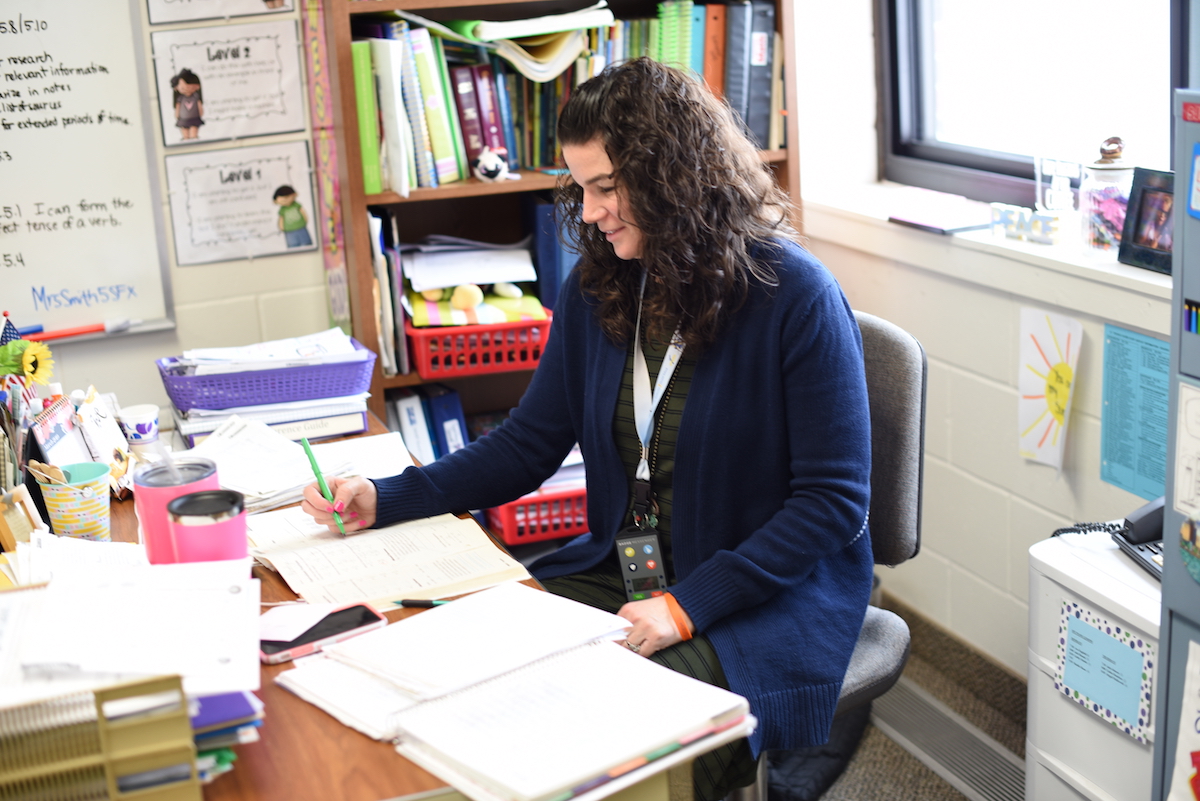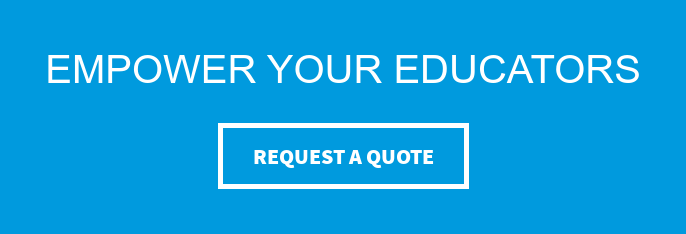With a sudden shift away from the classroom, some are wondering whether the adoption of online learning will continue to persist post-pandemic. And, if it does, how would this shift impact the worldwide education market and its communication?
In light of current events, here are 20 ways schools are mis-communicating or under communicating.
1. Soft-Pedaling Issues
Be the school that addresses those uncomfortable issues no one wants to talk about. Be the school who pioneers a new way of keeping students safe from school shooters. Be the principal who gives their teachers the tools they need to do what they do best — teach. Be the teacher who raises their hand and says they don't feel safe in your classroom and neither do their students. Don't be the school who soft-pedals important issues. Be the school who does what's right.
2. Not Saying Enough
With under-communication you run the risk of experiencing missed deadlines, expectations, and goals as a team. As the Principal or Superintendent, it's your role to make sure everyone has the information needed to move forward — especially during a crisis or emergency. For ideas on how to improve your day-to-day communication tactics, consider implementing an internal newsletter like Bill did below.
My weekly bulletin has become a resource for all stakeholders in the building and for administrators and other support staff in the district. I have three sections: events for the upcoming week, with time and location; upcoming events throughout the quarter; and an "As Seen" feature, in which I give important updates and shout-outs. Having a comprehensive bulletin has freed up time to concentrate on professional development.
—Bill Basel, principal, Defer Intermediate School, Streetsboro, Ohio (Source)
3. Saying Too Much
For the sake of this section, we'll keep this short and sweet (so you don't stare at us with one of the faces shown below). Get to the point and only communicate what's needed. Don't be the educator who sends a 500-word email because you didn't want to jump on a Zoom call.

4. Lacking an Internal Communication System
Times have changed. Your school can not (emphasis on can not) solely rely on telephones and cell phones as a communication system any longer. There are too many downfalls your staff face with cell phones that prevent them from successfully teaching and asking for help during emergencies or day-to-day activities (e.g. low battery life, spotty reception, and finding that dang thing when everything around you is on fire).
Today, there are school safety apps and school ID badge holders to assist with communication in schools. These school communication systems offer alerts, instant messages, and more during tough situations and emergencies. If you haven't looked into one, it's time.
5. Using Educational Jargon
According to this article, there are a few words you should avoid when communicating with non-educators. Why should you skip these in your upcoming email blast or social media post? So you can communicate clearly and in layman's terms with students, parents, board members, and others who are not well-versed in the education industry's terminology.
- Affective domain
- Alternative assessment techniques
- Assessment-driven instruction
- Authentic assessment
- Block scheduling
- Bloom's taxonomy
- Carnegie units
- Cognitive learning
- Competency-based instruction
- Conflict resolution training
- Contract learning
- Criterion-referenced tests
- Curriculum mapping
- Diagnostic teaching
- Divisional organization
- Emotional intelligence
- Gender-fair programs
- Grade equivalent scores
- Homogeneous grouping
- IEP (Individual Education Plan)
- Interdisciplinary instruction
- Integrated learning systems
- Kinesthetic learning
- Learner impact statements
- Management by objectives
- Multicultural instruction
- Multi-sensory approach
- Norm-referenced tests
- Outcome-based education
- Peer coaching
- Profile of learning
- Resource-based instruction
- Schools-within-a-school
- Scope and sequence
- Shared decision making
- Site management
- Standard deviation
- Strategic planning
- Synthesis
- Teacher assistance teams
- Total quality management
- Whole language instruction
- Zero-based budgeting
6. Being Reactive (Instead of Proactive)
Do you have an emergency communication plan in place? If you don't, you're setting yourself up for having to react to a situation quickly while under massive amounts of pressure and stress. Don't be that school. Instead, take time to be proactive by having a plan your team is aligned on and using an emergency school communication system to help prevent emergencies and decrease response times.
7. Missing a Vision or Common Purpose
It's hard to communicate if you don't know what it is you're communicating about. As the Principal or Vice Principal at your school, you have a team of individuals who are looking to you to guide them; to help them understand the common purpose they all share. It's your job to have a vision and communicate how your team and staff can help bring it to life — not matter the situation. Think about your current vision or purpose and how it might change or pivot in the following situations:
- A pandemic that turned all learning into e-learning (bet you never thought that'd be a possibility)
- A school shooting
- A fire
- A bomb threat
- A riot or fight between many students
- A tornado, hurricane, or earthquake
Thing about the wildest scenarios you can image and then write down how and when you'd communicate with your team (and the tools you'd need to do it successfully). Then consider what your communication expectations would be of them.
8. Ignoring Potential Problems
If you haven't considered potential scenarios or problems OR you don't want to think about them until they occur... we recommend reading number seven again.
9. Relying on Word-of-Mouth
Whether your news is positive or negative, relying on word-of-mouth as a communication tactic is dangerous. Anyone who has lived in a small town or attended a private school, knows that news spreads like wildfire. Get in front of an issue and address it before the rumors fly.10. Skipping Digital or High-Tech Communication Tools
With distance learning on the rise, digital communication and high-tech platforms are more essential than ever. In order to be the pioneer in your school district or state, you should be the first to try new digital trends. Considering looking into internal communication tools like Slack, Zoom, Teams, or Google Meets for more efficient ways to stay in touch throughout the day. And keep in mind, the most important thing when it comes to communication is that you choose a school communication system that fits your needs.
11. Disregarding Social Media
It can be your best friend or your worst friend — but your students, their parents, and your staff are all using it. So, the time is now to use it in your communication strategy and do it well.
12. Downplaying Safety Details
There's nothing more important than the lives of your students — teachers know it, parents know it, and you know it. By offering details and data that support your safety plan, you'll automatically reassure others that your plan to keep students safe is solid. For example, if a student suffers from a severe allergic reaction, you might send an email to parents with information on a new tool or "easy button" teachers will use to decrease the time it takes to ask for help. Some communication systems can track this communication and response time data to show how your safety plan (and the livelihood of your students) has been impacted.
13. Lack of Video
Now, more than ever people are using video to improve communication in schools. Whether it's the Principal on the morning announcement, a teacher emailing parents, or students sharing their work in a social media post — video is the way people connect. If you're nervous to start using more video in your school's communication strategy, you're not alone. The easiest way to get started is to jump right in and start recording! Your students are doing it daily... we know you can too.
14. Withholding Info on Progress
Conferences are a great time to connect face-to-face with parents and students to discuss their strengths and areas of improvement. But how else could your school be communicating about students' academic progress and achievements? If your classes have quickly transitioned to a pass/fail approach, what type of communication system or plan do you use to notify students and parents that their work is off track?
15. Not Thinking Ahead
This goes back to number eight a little bit — but you've got to start planning ahead. For example, we are in the midst of COVID-19, a pandemic that shook the world and schools across the United States. What is your school or state's plan for the fall and how can you communicate that with your staff and parents. People's emotions and anxiety are heightened, so what can you do to reassure them that the safety of their children is your number one priority?
16. Forgetting About Your Students
They're the reason you got into this field, after all. Whether you've transitioned fully to e-learning classes, call your students one by one each day, or host one "face to face" class on a conferencing platform each day — your students need you now more than ever. Don't forget to be open and honest with them as you are doing with other educators. This communication mistake goes beyond COVID-19 and needs to be a priority for the wins and losses your school experiences.

17. Jumping to Conclusions
Before you send a mass alert or press release, make sure you know your facts. The same goes for reaching out to a parent about their student's behavior or absences. Always assume the best and avoid jumping to conclusions.
18. Resisting Gen-Z Communication
If you find your students are recording TikTok videos in the hall instead of being in class try to bridge the gap and introduce a way to utilize TikTok into your curriculum and get students re-engaged. Students want to communicate with one another the same way teachers and educators do — they just do it in different formats. So, try and find a format they enjoy and bridge the gap between their world and the education that your school needs to provide.
19. Being too Formal
There's nothing more dreadful than reading a stuffy email full of words you don't understand when all you want to know is how this email applies to your son or daughter. Whether your school has won the state championship or is in the middle of an emergency lockdown — read the situation and try to be honest and authentic. While there is an expectation of formality in the education industry, it doesn't apply to every email or social media message your school communicates. Remember, you're human and so is everyone else. So talk to people like a human would.
20. Thinking Every School is the Same
We hate to break it to you, but they're not. No matter how large your district is or how close you are with the other educators in the school down the street... your school and your students are unique. Which means you need to think about how your school's communication, security, safety, and educational needs separately from everyone else's.
Benefits of Badge Messenger
Although these are great tips, there are downfalls to having a DIY approach. One being it can be hard to manage — and potentially leading to a communication gap. Not having a solid communication plan for all avenues can cause issues in student performance — that's where Badge Messenger® comes in. Request your quote.
